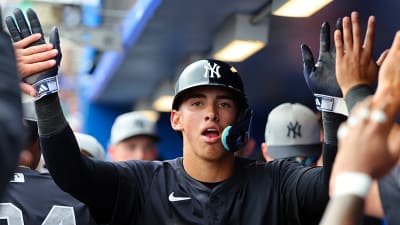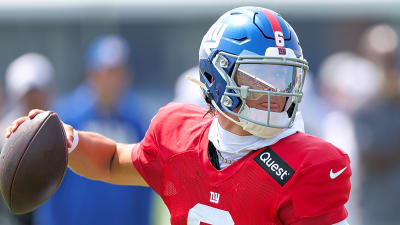
In my opinion, one of the most underrated and underappreciated types of players in the NHL are complementary forwards. While these players typically don’t drive play themselves, and may not seem flashy or eye-popping at first glance, they manage to be quite effective and useful nevertheless, often in subtle, yet impactful ways. I believe that the Edmonton Oilers have the textbook definition of a complementary forward in Vasily Podkolzin.
A left-shot winger who can play both sides, Podkolzin was drafted 10th overall in the 2019 NHL Draft by the Vancouver Canucks. However, he never lived up to his high draft pedigree in Vancouver, rotating between the NHL and the AHL from 2021-22 through 2023-24. Following the St. Louis Blues’ offer sheet to Dylan Holloway in August of 2024, the Oilers acquired Podkolzin from the Canucks in exchange for a 2025 fourth-round pick.
In the 2024-25 season, Podkolzin played in all 82 regular-season games and all 22 playoff games for the Oilers, being the only Oiler forward to do so, and put up a total of 24 points in the regular season and 10 points in the postseason. He spent time on all four lines throughout the lineup, but he most often played on the second line with Leon Draisaitl.
At first glance, Podkolzin’s production totals seem quite unimpressive, and perhaps even disappointing. Podkolzin spent nearly 600 5-on-5 minutes on the wing of a superstar centre, one that ranked second in Hart Trophy voting and won the Rocket Richard this past season, and yet failed to hit both the 10-goal and 30-point marks. For someone consistently skating next to a player of Draisaitl’s calibre, you’d expect a lot more production.
Still, I believe there was a key reason why the coaching staff entrusted Podkolzin to spend so much time next to Draisaitl. Podkolzin remains an extremely useful player, and while it may not be fully apparent in his production totals, it is quite evident in his advanced underlying numbers. To begin, take a look at Leon Draisaitl’s results with and without Podkolzin at 5-on-5 on the second line this past season:

Away from Podkolzin, Draisaitl operated at a net 53 percent goal share and 48 percent expected goal share when centering his own line. But with Podkolzin on-ice, it jumped up to a 57 percent goal share and a fantastic 62 percent expected goal share. In simpler terms, Draisaitl’s line out-scored and out-chanced opponents at a markedly greater rate with Podkolzin as opposed to without. Of course, WOWY metrics don’t always capture all necessary context and should not be treated as a be-all-end-all stat, but regardless, the fact remains that Draisaitl saw a significant improvement in his two-way results with Podkolzin on his wing.
Now, Draisaitl is coming off the best defensive season of his career, something that I wrote about in great detail back in January. I outlined many reasons for his defensive improvement, such as the fact that he was substantially more involved in his own zone this past season and greatly reduced the level of risk in his 5-on-5 game style, but one critical factor was his chemistry with Podkolzin.
Historically, Draisaitl’s best 5-on-5 results have come next to speedy, tenacious forecheckers, players that can skate hard and get Draisaitl the puck. Prior to this season, the most obvious example of this was back in the 2019-2020 season when Draisaitl won the Hart Trophy and spent significant time with Kailer Yamamoto on his right-wing. That year, Yamamoto was a small but feisty forechecker, exceptional at recovering loose pucks. We also saw a great stretch of defensive hockey from Draisaitl in 2023-24 when he played next to Ryan McLeod and Warren Foegele, both defensively responsible forwards with effective forechecking.
This trend has continued with Podkolzin. Here is a closer look into his individual underlying numbers, specifically his forechecking and defensive results:

In terms of on-ice results, Podkolzin’s net impact on generating and preventing quality scoring chances (RAPM xG±/60) ranked in the 90th percentile among all forwards. Furthermore, EvolvingHockey’s EVD (Even-Strength Defence) model rated Podkolzin’s even-strength defensive impact at +2.9, ranking first on the Oilers and 13th among all NHL forwards (!!).
It’s easy to see why Podkolzin’s two-way results, particularly defensively, were so strong. Firstly, Podkolzin was a superb forechecker this season, with his forecheck pressure per 60 rate ranking higher than 91 percent of NHL forwards. In fact, he was the only Oiler skater to rank above the league average in pressures per 60 this past season. His dump-in recovery rate too ranked above-average.
Using his size, strength, and physicality, Podkolzin did an exceptional job at disrupting opposition breakouts, consistently forcing turnovers and recovering loose pucks in the corners. This is a player with an excellent work ethic, one that does not take shifts off. His game has resulted in sustained possession in the offensive zone, resulting in less time spent in his own end and consequently fewer goals and scoring chances allowed, which is a big reason why Draisaitl saw such a significant improve at both ends of the ice with Podkolzin on his wing.
But make no mistake, even when the puck was in Edmonton’s own zone, Podkolzin remained effective. He was strong not only at retrieving loose pucks in the offensive zone but also the defensive zone, and once he obtained the puck, he was incredibly efficient at moving it out with control. Podkolzin’s possession exit rate ranked second amongst Edmonton’s forwards, only behind Draisaitl and even slightly ahead of Connor McDavid.
Thus, despite unspectacular box score totals, I believe there is an extremely compelling case to continue playing Podkolzin on the second-line in 2025-26. He complements Draisaitl exceptionally well, helping to fully maximize his offensive output through puck retrievals and increased offensive zone possession time while also providing invaluable defence. This is something that can be extremely beneficial in the playoffs.
However, with all of that being said, Podkolzin’s lack of offensive production should not be outright ignored either.
While the defensive results are certainly quite useful, offence should still matter quite a lot for forwards, if not much more. There should be a minimum expectation for offensive production for a top-six forward, and Podkolzin didn’t really meet it in 2024-25. Sure, he hardly had any power-play time, but his 1.43 points per hour rate at 5-on-5 remained rather unimpressive, especially considering the calibre of his linemates.
Now, at age 24, there is still potential for Podkolzin to breakout offensively. He already took a big step forward this season in comparison to his time in Vancouver, and it is reasonable to project further steady improvement. It should also be worth noting Podkolzin’s 5-on-5 points per hour rate improved to a very strong 2.4 in the post-season despite spending less time next to Draisaitl compared to the regular-season.
Still, a breakout is far from a guarantee, because in four years at the NHL level, Podkolzin has yet to prove that his puck skills and finishing talent are at the satisfactory level for an NHL top-six player. And while it is by no means improbable, it is somewhat uncommon to see a player see a substantial improvement in their finishing and passing abilities after the age of 24.
All things considered, when it comes to player deployment, it is important to acknowledge both the strengths and weaknesses of players. They should be utilized in roles that best align with their skill set and talents. In Podkolzin’s case, I believe the role that he is most suited for, the role that would best benefit the team, is as a complementary forward. This is a player who may not be able to drive offence at a consistently strong rate on his own line, but when paired with a skilled, play-driving centre (such as Draisaitl), his forechecking and defensive ability can prove to be extremely useful.
Moving forward, I strongly believe the Oilers should structure their second line as Podkolzin – Draisaitl – X (or X – Draisaitl – Podkolzin; note that Podkolzin can also play RW), with the “X” spot being reserved for a much more impactful offensive forward. In a way, Podkolzin should be treated as the third wheel; he’s the defensive presence on the second line, the guy that gets the puck to Draisaitl and “X” while they the heavy lifting offensively. Stylistically, this seems most optimal to both fully maximize Draisaitl’s potential and make the most out of Podkolzin’s abilities. Any improvement in production from Podkolzin would be a nice additional bonus.
Andrew Mangiapane could fit nicely into that “X” spot. As I wrote a couple of weeks earlier, Mangiapane has a solid track record of producing next to skilled players, and in addition, his defensive metrics are also quite strong. A potential line of Mangiapane – Draisaitl – Podkolzin could be outstanding defensively.
A very intriguing option for the third spot is Matthew Savoie. Considered by many as Edmonton’s top prospect, Savoie had excellent production rates in the WHL and the AHL, and for what it’s worth, he showed some flashes next to Leon Draisaitl in the four games he played in the NHL in 2024-25. Savoie’s superb play-making and offensive creativity combined with Draisaitl’s elite scoring and Podkolzin’s defensive ability could result in an exceptionally well-rounded second line.
And of course, the Oilers could also explore the trade market at the 2025 trade deadline if needed in the case that Mangiapane fits best elsewhere in the lineup and if Savoie isn’t quite ready for NHL top-six minutes. Again, it would be best to target a forward with much offensive capability to fully round that line.
All-in-all, I believe there is a role for Vasily Podkolzin on Edmonton’s second line next to Leon Draisaitl. With the departure of multiple forwards this summer, I would expect Podkolzin and Draisaitl to continue playing significant minutes together in 2025-26.
More must-reads:
- Best fits for fringe NHL playoff teams to complete their roster
- Five likely NHL bounce-back candidates for 2025-26
- The 'NFL Defensive Players of the Year ' quiz
Breaking News
Trending News
Customize Your Newsletter
 +
+
Get the latest news and rumors, customized to your favorite sports and teams. Emailed daily. Always free!








